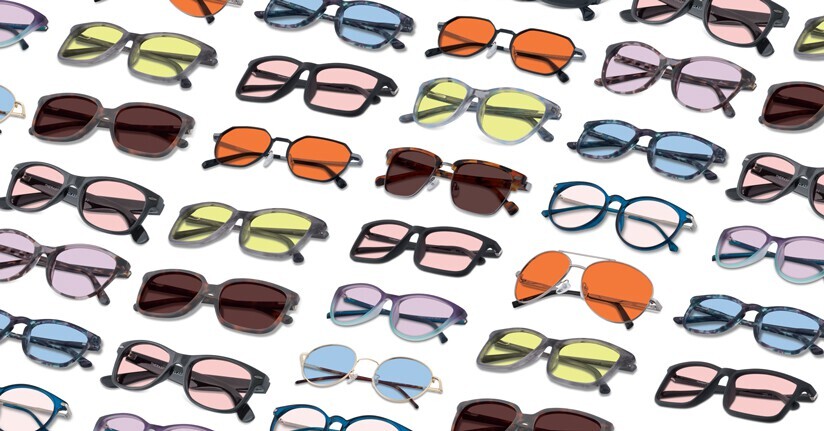The 10 Biggest Vestibular Migraine Triggers
Key Highlights
- Vestibular migraine can be triggered by a variety of factors, including typical migraine triggers as well as more unique factors
- Stress, light exposure, lack of sleep, and head motion are among the most common triggers of vestibular migraine
- If you are already sensitive to light, you may be more likely to be agitated by bright light, glare, and other visual disorientation
- Vestibular migraine triggers can be difficult to identify and distinguish, so you should work with your doctor to help isolate them
There are no "universal" triggers for those with migraine, but certain factors do seem to affect patients more commonly than others. This generally holds true for those with specific migraine types too, including vestibular migraine, whose distinguishing feature is dizziness and vertigo. And there are some unique complications as well that must be taken into account.
The top triggers of vestibular migraine, according to research, include:
Stress
Stress always floats to the top of any "migraine triggers" list, so it is not surprising that it also tends to cause problems for those with vestibular migraine. Even with the variable characteristics of migraine attacks, estimates still suggest that nearly half of those with migraine-related vertigo are induced by increasing stress. And of course we know that those with any type of migraine are at a greater risk for stressful reactions and other emotional symptoms.
Bright Light
We have extensive knowledge of the negative role that light plays in migraine, which makes it unsurprising that is included as a leading trigger here. Light sensitivity or photophobia is already a diagnostic signal for vestibular migraine, and exposure to high-intensity lighting has also been connected to general dizziness symptoms, regardless of condition.
Related factors associated with light exposure include visible flicker, glare, and even the onset of eyestrain, all of which can initiate photophobia, dizziness and vertigo in vestibular migraine.1 Ultimately, the more light sensitive you are, the more likely visual and light triggers will impact you.
Particular wavelengths of light can also play a role in the onset of vestibular attacks, with light in the blue-green spectrum (480-520nm) being the most problematic for a light-sensitive brain.
Lack of Sleep
Sleep disturbances can bring on vestibular attacks in more than 25% of migraine patients, particularly first thing in the morning or in the middle of the night. Researchers do not know exactly why this occurs, but they believe that there are several migraine pathways that are activated when sleep is disrupted.
Weather Changes
One of the more subjective triggers revolves around changes in the weather, however it still is reported by a significant percentage of those with migraine-related vertigo. In a 2019 analysis, incoming storm systems were the most frequent weather-related issue to cause vestibular attacks, although changes in season are also thought to contribute to this process.
Visual and Motion Triggers
The eye-to-brain system is highly sensitive for people with migraine (as evidence by the high proportion of those with photophobia), and this is especially true for people with a vestibular component. For example, vestibular migraine attacks can be triggered by the following stimuli:
- External motion such as moving vehicles, movies or computer screens
- Visually "busy" or "cluttered" environments, including shopping malls and grocery stores
- High-contrast patterns like flashing lights or even striped images
And all of these have been shown to be the biggest factors in the development of vestibular-specific symptoms, which includes dizziness, vertigo and lightheadedness, among others. And you are even more likely to be aggravated by them if you already experience photophobia.1
Menstrual Changes
Given the high percentage of women who are affected by migraine and other headache disorders, biological changes involving the menstrual cycle can have a major impact on attacks. In fact, anywhere from 20-40% of patients with vestibular migraine have acknowledged that these hormonal fluctuations have triggered at least some of their symptoms.
Excessive Head Motion
Another unique stimulant for vestibular episodes has to do with head motion, which might affect more than 80% of individuals with the condition. This may actually make it one of the most common triggers for vestibular symptoms, and it can be as simple as turning one’s head too quickly or shifting it from one view to another repeatedly.
Dietary Triggers
Food and drink consumption is another common migraine trigger that equally impacts those with migraine-associated vertigo—perhaps even as many as half of patients. More specifically, skipping meals, drinking alcohol or red wine, and caffeine intake are among the most likely behaviors to initiate attacks, according to research.
Exercise
Although less prominent than others, exercise can still cause problems for people with this subtype of migraine. Although there does not appear to be additional risk, we have to remember that exercising often incorporates head, neck and other sensitive movements for those with vestibular migraine.
Noisy environments
Much like light sensitivity and visual disorientation, sound can play a prominent role in the onset of vestibular migraines. Scientists have repeatedly connected the migraine process with sensory processing, and many with the headache disorder report comparable levels of sensitivity to both light and noise. Although light may be a bigger threat for vestibular attacks, rarely do they exist in isolation.
Conclusion
It's important to remember this is just a short list of the leading triggers associated with vestibular migraine, and in fact there may be countless more that affect patients just as prominently: fatigue, strong odors or airline travel, to name a few.
It is also worth noting that triggers can be notoriously difficult to pinpoint, which further mudies the waters. One study showed that just over half of people with vestibular migraine were able to specify their triggers, and even then, it can be challenging to distinguish between symptoms and actual attack-inciting factors.2
We encourage you to work with your neurologist or headache specialist to identify those factors that are causing trouble for you, and ultimately construct a plan to better manage your triggers. Lifestyle modifications (avoiding dietary triggers, improving sleep) may be an especially powerful tool in improving dizziness, headaches, and other symptoms of vestibular migraine.3 Other tools, like glasses that help manage light sensitivity, can yield similar impact.
Read more about Vestibular Migraine:
What We Know about Vestibular Migraine and Light Sensitivity
The 9 Most Common Vestibular Migraine Symptoms
Read more about migraine triggers:
8 Common Triggers of Migraine with Aura
How Migraine Attacks Can Be Triggered or Worsened by Light
Can Striped Patterns Trigger Seizures and Migraine Attacks?
Primary references:
Beh SC, Masrour S, Smith SV, Friedman DI. The Spectrum of Vestibular Migraine: Clinical Features, Triggers, and Examination Findings. Headache. 2019 Feb 8. doi: 10.1111/head.13484. [Epub ahead of print]
Vuralli D, Yildirim F, Akcali DT, Ilhan MN, Goksu N, Bolay H. Visual and Postural Motion-Evoked Dizziness Symptoms Are Predominant in Vestibular Migraine Patients. Pain Med. 2018 Jan 1;19(1):178-183. doi: 10.1093/pm/pnx182.
Additional references:
1Zou X, He J, Zhou M, et al. Photophobia and Visual Triggers in Vestibular Migraine. Neurol Ther. 2024;13(4):1191-1201. doi:10.1007/s40120-024-00631-8
2Baier B, Winkenwerder E, Dieterich M. "Vestibular migraine": effects of prophylactic therapy with various drugs. A retrospective study. J Neurol. 2009;256(3):436-442. doi:10.1007/s00415-009-0111-3
3McDonald K, Wasoff A, Picou EM, et al. Short-term effects of lifestyle modification on vestibular migraine. Int J Audiol. Published online October 13, 2024. doi:10.1080/14992027.2024.2409763
Last updated 11th June 2025

TheraSpecs® Glasses for Light Sensitivity
Find the glasses that fit your needs and lifestyle, and stay protected from screens, fluorescents, unwanted blue light, sunlight, flashing lights, and more.
Shop Now





